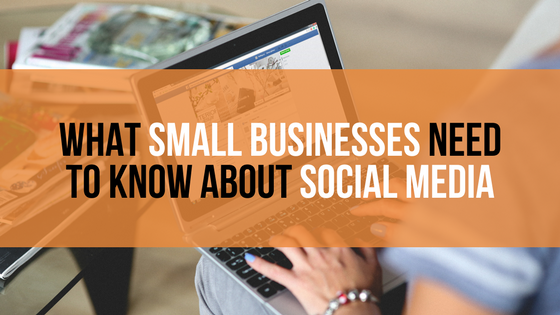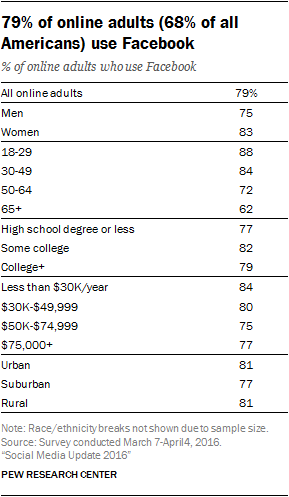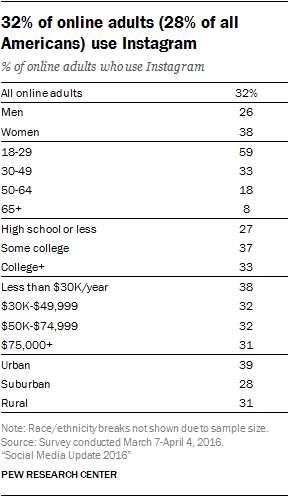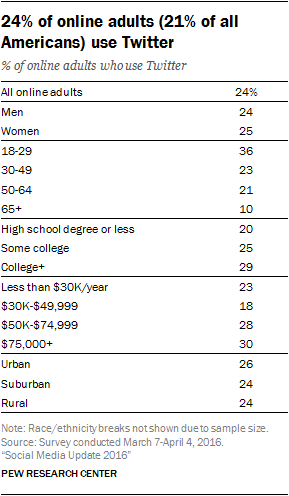These days, when “successful marketing” is often synonymous to “good social media presence,” it goes without saying that social media is where your small business needs to be. Gone are the days of TV and radio advertising’s reign as the kings of marketing, digital advertising is taking over now and a big chunk of that is social media.
It has come to a point where your business being on social media is not only important, but critical. Whether you’re a small business owner just getting into social media or is still on the fence about it all, here are questions you may have about social media answered:
Who’s on social media?
A common misconception a lot of small businesses have is that their audience is not on social media. While it may be true that certain demographics didn’t take part in Facebook, Instagram, or Twitter a couple of years ago, that certainly isn’t the case anymore. You’d be surprised!
Pew Research Center released social media usage statistics for 2016 based on a national survey of 1,520 adults conducted on March 7-April 4, 2016. Their study found that 79% of Internet users (which is 68% of all U.S. adults) use Facebook.
Out of that, young adults (18-29) lead the ranking for user age demographic on Facebook, but if you’re target market is on the older side, you’d be happy to learn that a good 62% of people ages 65 and older are also on Facebook.
Here are the charts provided by Pew Research Center on Facebook, Instagram, and Twitter user demographic:
There are so many – do I need to have one of each?
Of course not! In fact, it’s advisable for small businesses to stick to just two social media platforms. Define your audience, and find out which platform they prefer. Refer to the data given above to see where your target demographic spend their time when they’re online. Market research is key.
Once you’ve done the research, personified your audience, and have a good idea where they can be found online, make sure that the platforms you choose to use are coordinated but not a carbon copy of each other. They should be one in the sense that they are both working for the same goal, but understand that there are different ways to handle social media marketing depending on the platform.
If you find that most of your customers are on specific networks, tailor your social media posts to both the network and your demographic. For example, a coffee shop who’s target audience are people 18-29 who make less than $30k a year, will find the most success on Facebook and Instagram. Facebook is multi-optional, so don’t just stick to posting photos of your business. Tell your customers more about the business by utilizing its many features that is fit for your business. You can also target the demographic you want to reach specifically with Facebook’s targeting feature. Instagram is cleaner and more straight-forward. Use this to show off your products or post videos relating to your services. Get creative! Remember: Quality of photos matter a great amount when it comes to getting engagement on Instagram, so pick the photos you post wisely.
How do I know if it’s working?
The first thing to look at to see if your social media strategy is working are your vanity metrics. These are the likes, favorites, retweets, shares, etc. that your posts on social media get. Social Media Today considers vanity metrics as a non-highlight of overall results, but is the best and fastest way to gauge the people’s interests. Keep track of these measurements, what type of content gets the most of them, what time of the day it usually gets them, and this will enable you to better place your strategy. If you’re on Facebook, make use of their Page Insights tab to get a better gauge on these measurements.
Another way to know is to track the sales, calls, foot/website traffic, orders, etc. that directly come from your social media networks. Make it a habit to ask your customers where they heard about you, and keep track of the number of people who say “online.” If a social media strategy is done right, a noticeable influx of customers can be seen in a as soon as two months, depending on the intensity of your strategy. If you have a website, make sure to track traffic from the day you start your strategy. A free tool called Google Analytics is at your disposal for better tracking.
Finally, if your strategy is working, you will have evidence to prove a return of investment.
What will it cost me?
Convinced this is something you should do but worried at how it will affect your overall budget? The good news is social media for businesses is free to use for anyone BUT, and this is a big one, you have to make time for it. A good social media strategy doesn’t just rely on posting when you can about whatever you feel like posting about.
If you don’t think this is something you can fully make time for, that’s okay! Being a small business owner is time consuming enough. Consider hiring an agency or a social media manager to take over. While this might not seem like something you might want to invest in, it should be. A lot of businesses outsource this and whether you choose to do that or not (there are many ways one can handle marketing in house), it’s important to give value to it. After all, you can’t make money if you don’t spend money – and this is especially true for marketing.
Hiring a marketing person/agency might not be in your overall budget right now, this is where small business funding can come in. Traditional loans such as bank loans often take too much time with a low approval rate, consider taking your marketing costs from an alternative lending company such as Ironwood Finance who provides deals suited for your needs. Apply here.
Was this article helpful to you? Don’t forget to share!



